DEBORAH CROMBIE; I think I'm just the right person to host our guest on JRW today, author Leslie Wheeler, because I think I am a tree sprite. I have loved trees passionately since I was a small child. Some of my earliest memories are of the wind whispering through the tops of the trees that surrounded our house. Trees are my touchstone, the one thing in nature that I can't imagine living without. And I HATE to see trees destroyed, so you can imagine how Leslie's essay--and the subject of her book--resonate with me.
Leslie, tell us more.
There’s
a moment in my new mystery, Shuntoll Road, when the main character,
Kathryn Stinson, having just learned that a real estate developer has bought
the property she’s renting with plans to turn it into an upscale development,
worries that the landscape she’s grown to love will be ruined. She gazes at the
pond and sees: “A sudden gust of wind raked the surface. In the water’s
disturbed state, the tree reflections seemed to reach toward her, like drowning
swimmers grasping for a lifeline before going under for good.”
I
wrote those lines after walking back and forth between my study at one end of my
Berkshire house and a room on the other end with a view of the pond and the
woods beyond. The image of trees as drowning swimmers grew out of my own lifelong
love of trees and distress at their possible destruction.
In
the landscape of my Southern California childhood, four trees stand out. California
pepper trees with gnarled, twisted trunks, and bright pink berries lined the
street where I lived. They were old trees and subject to disease, and I recall
being upset when a tree died or was threatened with removal. It was like losing
an old friend. My neighborhood was also home to eucalyptus trees. Their
spreading branches with bluish leaves and gray bark opening up to a yellowish
surface were a source of delight to me, as was their plangent smell in the
rain.
We
had olive trees in our yard, and in one of them, my father built me a tree
house consisting of a wooden platform with a ladder leading up to it. I
entertained friends there, but mostly it was where I went to be alone--to read,
make up stories in my head, and daydream.
Another
favorite place for day-dreaming was under a sycamore, whose branches reached
into our yard from our next-door neighbor’s yard. I’d lie on my back on the
grass and look up into its soaring branches. My parents complained about the leaves
and hairy brown seed balls it dropped into our yard. But I’ll never forget the
feel of those large, soft, leathery leaves on my fingertips.
In
New England where I now live, other trees offer shade and shelter, comfort and
companionship. A poplar casts a cooling shadow on my Berkshire home in the heat
of summer, and whispers to me in the wind. My study there looks out on a white
pine, which gives me something lovely to gaze at instead of the blank screen of
my computer when words fail me.
My
study on the third floor of the Cambridge condo, where I write when not in the
Berkshires, overlooks several trees, including an ancient maple that is covered
with burls. The newer owners thought it unsightly and wanted it removed, but
those of us who’ve lived there the longest fought to save it, so the maple was
merely trimmed rather than cut down. Its knobby trunk reminds me of the pepper
trees where I grew up, and my eyrie of a study has replaced the tree house of
my childhood as the place where I make up stories.
Readers:
Do you share a love of trees? If so, do you have a favorite tree or trees, and do
these trees appear in your books? One of the commentators will receive an ARC
of Shuntoll Road.
Boston library curator Kathryn Stinson
returns to the Berkshires, hoping to rebuild her romance with Earl Barker, but
ends up battling a New York developer, determined to turn the property she’s
been renting into an upscale development. The fight pits her against Earl, who
has been offered the job of clearing the land. When a fire breaks out in the
woods, the burned body of another opponent is discovered. Did he die attempting
to escape a fire he set, or was the fire set to cover up his murder? Kathryn’s
search for answers leads her to other questions about the developer’s
connection to a friend of hers who fled New York years ago for mysterious
reasons. The information she uncovers puts her in grave danger.
An award-winning
author of books about American history and biographies, Leslie Wheeler has
written two mystery series. Her Berkshire Hilltown Mysteries launched with Rattlesnake
Hill, and continue with this book, Shuntoll Road. Her Living History
Mysteries, featuring amateur sleuth, Miranda Lewis, debuted with Murder at
Plimoth Plantation, recently re-released as a trade paperback by Encircle,
and continue with Murder at Gettysburg and Murder at Spouters Point.
Her mystery short stories have appeared in numerous anthologies including Mystery
Most Geographical; Noir at the Salad Bar, Culinary Tales with a
Bite; Day of the Dark, Stories of Eclipse; and the Best New
England Crime Stories anthologies, published by Level Best Books, where she was
a co-editor for six years. Leslie is a member of Mystery Writers of America and
Sisters in Crime, and a founding member of the New England Crime Bake
Committee. She divides her time between Cambridge, Massachusetts, and the
Berkshires, where she writes in a house overlooking a pond.
You can buy Shuntoll Road here.
DEBS: Pat D, you are the lucky winner of Kim Power's RULES FOR BEING DEAD! Email me at deb at deborahcrombie dot com and I'll connect you!
DEBS: Pat D, you are the lucky winner of Kim Power's RULES FOR BEING DEAD! Email me at deb at deborahcrombie dot com and I'll connect you!










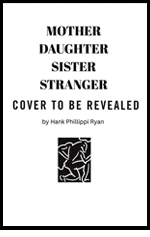
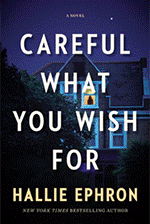
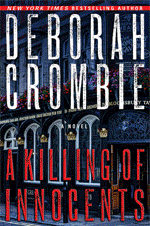
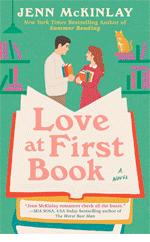
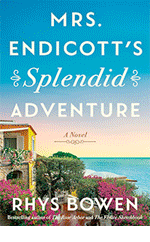

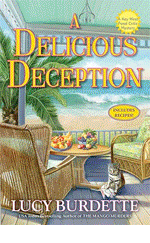
This comment has been removed by the author.
ReplyDeleteLeslie, your description of the tree reflections from your book is breathtaking.
ReplyDeleteThe tree I remember most from my growing-up years is a wonderful old weeping willow that grew in our front yard.
Now we live in the Pine Barrens so most of the trees surrounding our house are pines, but we recently planted a weeping willow in our yard [and seeing it makes me smile] . . . .
Thank you, Joan, I love your description of the weeping willow in your front yard when you were growing up, and how you duplicated it in your current location. Makes me wish I could do that with some of the trees from my childhood, but they don't grow in New England, alas, and I have learned to love the trees that grow here.
DeleteI don't know that I am as attached to trees as you are. However, I grew up camping in the redwoods of northern California, and they are wonderful. They are the one thing I miss the most about being here in southern California now.
ReplyDeleteI love the redwoods, too, Mark, and because I went to college and then graduate school in the Bay Area, I was able to visit Muir Woods often, and it's still a favorite destination of mine on visits to northern California.
DeleteThese trees, some being 1000 years old when Christ was born, make me realize how insignificant so many things in my life are.
DeleteGood point, Ann. Very old and very tall trees have a way of transporting us out of ourselves and our sometimes petty concerns, and directing our gaze upward.
DeleteI have a fascination with trees that causes me to look at them as feeling beings. Like you described the trees, Leslie, as reaching out to Kathryn, I’ve always imagine the trees whispering to one another and to us, being alive. When we moved into our house 32 year s ago, there were three large trees besides some smaller ones and the giant pines trees out back. The two right off the back of our house had to be taken down because we lost large limbs during storms, and it was only a matter of time before we had a limb come crashing through the house. I didn’t want to see them go, but I learned to be okay with it. But now my giant tree out front that survived a lightning strike has been deemed diseased and dangerous. I refuse to believe it, in complete denial. My husband keeps pushing to have it taken down. This tree is the last tree in our immediate neighborhood to lose its leaves 🍁 n the fall. For years I’ve watched the last few leaves hang on and finally drop. Our granddaughter has climbed i that tree. In short, it has been a good friend. Over the last couple of years, some dear friends (humans) and family members have passed away, and I really don’t know if I can stand the loss of this tree, too. It’s given me such comfort over to he years. I know it probably sounds silly to think I’ll grieve a tree, but I will. And, don’t get me started on the effect its absence will have on my beloved birds. I’m putting off its removal until my husband insists.
ReplyDeleteTalking about books dealing with trees, how many here have read the Pulitzer Prize winning The Overstory by Richard Powers? I do have it, but I haven’t gotten to it yet. I will. Author Ann Patchett calls it the best book ever written about trees. It’s fiction, but, apparently, with a depth of powerful truth. I also want to read a non-fiction book entitled The Secret Life of Trees. And, I now want to read Shuntoll Road, Leslie. Congratulations on your new book, and thank you for your beautiful words about trees.
Hi, Kathy, thanks for your beautiful post. It's good to know that others share the strong connection I feel with trees. I have faced the same dilemma as you have with your giant tree out front with the poplar that's by my house in the Berkshires. It's close to the septic tank and the roots get in there, and I was told I should take it down. Also, the branches stretched dangerously over the roof of the house at one point. I dealt with that by having the branches trimmed back and then cabled. Now it grows straight up instead of leaning over the house. But like you, I would feel terrible if I lost it. I have copies of both the books you mention: The Overstory and The Secret Life of Trees, and have delved into both, but need to finish reading. Toward the end of Shuntoll Road, a friend gives Kathryn a book as a present to help lessen the hurt she feels at losing her trees, and although the title isn't mentioned, the book I had in mind was The Secret Life of Trees.
DeleteWhat a lovely essay.
ReplyDeleteLike Joan, the tree I remember best from childhood is a weeping willow. It's branches brushed the ground and we populated the secret places under the trunk with our imaginary forts, castles, and hideouts certain the boughs hid us from all adults.
Thank you, Kait for your kind words about my essay, and for reminding me of another important role that trees play in our lives, as forts, castles and hideouts for children, but also as hideouts for adults as well.
DeleteSomething else came to mind. Like so many who have read Shel Silverstein’s The Giving Tree, I never liked the ending where the boy/man used up the tree in building his house. I wanted the tree to, well, live. There is someone, whose name I can’t think of right now, who has written an alternative end to this book and some others. In it, the tree says no to the man about cutting it down, and they and the children that follow in the family have enjoy one another year after year.
ReplyDeleteHere’s the link for the Giving Tree alternate ending. There’s one for The Rainbow Fish, too. https://www.topherpayne.com/giving-tree
ReplyDeleteLove the alternate ending to The Giving Tree, Kathy! I loved that book when I was a kid, but as I grew up I began to think, "What the what?" Happy to know I'm not the only one.
DeleteLike you, Gigi, I loved the book and when I was younger, and I read it to my kids with delight. But, I do think there was a seed of doubt even then that grew into how you perfectly phrased it, What is he what?”
DeleteI remember those sycamore leaves from my childhood, too, Leslie. And like Mark I grew up camping amid sequoias, the Giant Sequoias. I loved the book, as you know!
ReplyDeleteThanks for your comment, Edith! Good to know that you remember the wonderful sycamore leaves from your childhood. In those days, we had letters instead of number at the beginning of phone numbers, and my family's was SY for sycamore.
DeleteAnd mine in Temple City was AT for Atlantic! AT66349. Do we ever forget our childhood phone number?
DeleteMy childhood phone number was 250. I am almost as ancient as redwoods.
DeleteAfraid I've forgotten my childhood phone number except for the SY, Edith. And, you only had three digits for your childhood phone number?
DeleteCongrats on the new book Leslie. I grew up in NJ with big oaks and maples. we didn't have a tree house, but we made little fairy houses among the roots.
ReplyDeleteEnjoyed the mention of fairy houses, Lucy/Roberta, they reminded me of seeing similar fairy houses--think there's another name for them, but I can't remember it--in the woods on Monhegan Island in Maine, and they were delightful!
DeleteWhen we lived in a small NE Ohio town, the owners of a tall blue spruce strung their tree with year-round Christmas lights, which they would turn on for family and friends birthdays. Loved it!
ReplyDeleteThanks for your post, Margaret. It's good to be reminded how beautiful trees look when lit up for the holidays. My dad was a master of Christmas lights, which he strung on the olive trees and birches in our yard--gorgeous!
DeleteCongratulations, Leslie! The new book sounds wonderful. I'm still a big fan of Miranda Lewis.
ReplyDeleteTrees from my childhood - I grew up in Los Angeles and we had a gnarly olive tree in the front yard... lovely for shade but a mess when it dropped olives all over the place which turned the stone patio into a slimy red mess. And I walked to school in the spring under oak trees -- worms dangled from them in the spring, landing into my hair and down my back)... in the fall acorns pelted down like BBs. A fonder memory is sitting in the back of our car, resting my head on the seat back, and watching through the rear window as arching tree branches met overhead. I wasn't much of a nature girl, I'm afraid.
Thanks, Hallie! I'm still a fan of Miranda Lewis, the heroine of my first series,too, and enjoyed getting reacquainted with her while re-reading Murder at Plimoth Plantation in preparation for its release as a trade paperback in February of 2020 from my current publisher, Encircle. And who knows, I might still write another book in that series--after I finish the sequel to Shuntoll Road that I'm working on now. Re your tree memories, yes, olive trees and others can be messy, but worms--ick! Acorns can be bothersome, too, but glad to hear you have a nice memory of trees as well. I love the cathedral effect of trees when you look up into the arching branches way above you.
DeleteI remember southern California walnut trees, Hallie. We had some at the far end of our school playground, and I loved walnuts. But when we cracked these open, they were full of worms. Ick.
DeleteI love the cover of your book. This and your essai tells me I will enjoy your book.
ReplyDeleteI live in the country and I cherish every tree on my property and in my surroundings. I watch them changing through the year.
When I visited Australia, I took lots of photos of trees we don't have here in Quebec. I especially enjoyed the jacarandas in flowers, so magnificents.
Thank you for your comment, Danielle, and yes, it's fun to watch trees change through the year, something I missed growing up in Southern California, where most trees didn't change color. And thanks for the mention of the jacaranda trees. We had one in our yard in California, and it was so beautiful when in bloom!
DeleteHail, fellow tree lovers! My husband's dad bought the property we live on in 1960, and he planted one of his favorite beech trees in front of the house. When we tore down the house two years ago to make way for the new one, I asked an arborist how to save the tree from uncaring construction contractors. It was a constant battle, but I managed to protect it. Not so much some of the others on the property, I'm afraid. A massive oak tree had to be removed. It couldn't be saved because of a crack in the middle of the trunk, alas. Taking it down completely changed the habitat between our house and the one next door. It even changed the ambient temperature.
ReplyDeleteWe need to replace trees often, and I worry not enough of us are doing that when ancient trees inevitably die off or are damaged in some way. They take so long to achieve their full potential.
The horticultural director at the Cincinnati Zoo, in a landscaping class, said that one native species of oak can provide food and habitat for as many as 350 species of animals, including insects, birds, and mammals.
DeleteThank you for your comment, Karen. It's so important to replace the trees that either come down on their own or have to be taken down. I felt terrible when I had to take down a poplar in the Berkshires that kept splitting and leaving branches stretched across the driveway. But I felt much better when I had another tree--a swamp oak--planted to replace it. Thanks, too, for the information about how important trees are to the entire ecosystem.
DeleteWow, Karen! That’s a lot of species depending on a tree.
DeleteKathy and Leslie, even dead trees provide homes for an amazing variety of wildlife. It's too tempting to want them gone in the landscape because we perceive them as "unsightly", but they are an important lifecycle support vehicle for many species.
DeleteTotally nature girl, here.
ReplyDeleteWelcome to JRW, Leslie. Your book sounds so interesting. It is hard to combat a developer once a town thinks the money coming into their coffers will offset the expenses the new residents' needs will pose.
I do love trees and have a great concern for our planet because of the greedy, unstoppable deforestation efforts in so many countries. Some of global warming is directly caused by the diminished forest cover on our Earth. As a child, I think I believed that trees were magical somehow, and I could have been a dryad. Trees certainly are the awesome sentries of our lives, spanning the generations, recording the rainy seasons and droughts long past.
The story of the Connecticut Charter Oak, a footnote in American History, is one of those wonderful stories I remember finding fascinating when I was a kid. But, I think my favorite tree is the maple, giver of that sweet amber syrup that is a staple here.
Oh, and who else was disappointed when the LOTR epics were made into films, to realize that the entire episode of the Hobbits' visit with Tom Bombadil was left out of the movie. Of course, it was a relief to see the Ents, but the elimination of that magical character was disappointing. Just saying.
Hi, Judy, love it that you describe yourself as "totally nature girl," which is how I could describe myself as well. And the deforestation that's going on in some countries is terrible, and so harmful to the planet. You're also right on the mark about trees having a magical quality, and they do serve as important record keepers of the past and present. I'm a big fan of maple syrup, too, especially when served over blueberry pancakes from the bushes I have in the Berkshires.
DeleteI love trees too which is why I live in the woods. But I've been wanting to build a new house and my aunt has given me a lot. Trouble is it is a hay field with not one tree! Yes, I could plant trees but all in all I am probably better off just staying put, even though at my time of life it would be better to live on level ground with stairs. Oh well we can't have everything. So I have been using my Kellogg's points to plant trees around the world.
ReplyDeleteSometimes I try to decide when do I like tress best - in full leaf or when all the leaves are gone and we can see their natural beauty. I can never decide so I love them both! Looking forward to reading your book, Leslie.
Hi, Judi, I appreciate your dilemma. My home in Berkshires is located on an old field that is rimmed with woods, but except for the one poplar near the house, there are no other trees close by, which translates to little shade. Much as I love trees, I also wanted light for my vegetable garden and flower borders, which was the trade-off I made. As you say, we can't have everything, and I applaud your efforts to plant trees around the world.
DeleteShalom Friends. This year, because of the “lockdown”, our church substituted You Tube and Facebook Live for the real thing. They tried to change things up from week to week, to keep people’s interest. One week they had the worship team of two, up on the roof of our new building and shot the footage of the music makers entirely with a drone. I actually was thrilled to see in every direction they showed nothing but tall trees in every direction. A canopy of green.
ReplyDeleteI love trees. Particularly the flowering trees of Spring. I was amused to be reminded that Orwell’s 1984 protagonist would spend time after being released from prison where he was tortured, hanging out in the Chestnut Tree Café.
They say that at one time, before my time, the American Chestnut was so populous that a squirrel could travel from Maine to Georgia without ever touching the ground. Apparently, disease killed the entire population with a few thriving in secret out of the way places. My apartment complex is called Oak Terrace and at this time every year, the large oaks in front start to shed acorns and the squirrels help the process along by shaking the branches.
My favorites are the ornamental Japanese maples. There are a lot of them in our neighborhood. Large, mature trees of all sorts of hues from bright red to purple. I take pictures of them all year long with my cell phone camera.
Leslie, congratulations and thanks for your latest book. I will take a look at what people are saying about it on Goodreads.
My brother and sister-in-law are Cantabrigians and while I have visited them many times for family events, I’ve never seen their house nor what trees they might have.
Thanks for your comments, David. Good for your church for showing you the canopy of trees, which is what I have here in Cambridge when I look out either window of my third-floor study. And yes, I remember the line about a squirrel being able to travel from Maine to Georgia via trees from my days of working on American history textbooks. I also share your love of ornamental Japanese trees, though the one I have in the Berkshires is a Japanese plum tree. For years it was overshadowed by the poplar by the house, and bore no fruit. But when I had the poplar trimmed and the branches cabled, the plum tree got more light and celebrated by producing a bumper crop of fruit! The one tree I wish I had but don't is a copper beech, as I'm always struck by their amazing beauty whenever I see them.
DeleteTrees? What's not to like?
ReplyDeleteThe most unusual tree I ever was was a monkey puzzle tree, in the front garden of my English friend, Jo, who lives in Manchester. I'd never seen one before, and no picture does it justice. Nature is a wonderful architect.
Hi, Ann, thanks for letting me know about the monkey puzzle tree. That's one I've never heard of before. Will have to look up. And yes, how true that nature is a wonderful architect!
DeleteTree lover here! The premise of this book speaks to me on many levels. When my boys' beloved climbing tree, a Carob, was split in half in a monsoon, we all wept. Congrats on your release, Leslie. I can't wait to read it!
ReplyDeleteThanks for your comment, Jenn. Always enjoy hearing from another tree lover. Not sure I've ever seen a Carob tree, though. That's another one I'll have to look up. Thanks again!
ReplyDeleteI grew up on the edge of an oak forest, and loved playing under the trees. When I moved from Missouri to west Texas, the trees were different, but I adored a huge old cedar elm outside my kitchen window. Then I moved to McKinney, which is sort of the ragged edge of east Texas, where some of the northern hardwood forests hang on. I think one of the main reasons why I bought my house is that there are three huge oak trees in the back yard. So wonderful!
ReplyDeleteHi, Gigi, I love how you've found favorite trees wherever you've lived, and that now you're back with the oaks of your childhood. The street where I lived until I was four in California was called Glen Oaks, and I always thought it was a beautiful name. And now I have a swamp oak on my property in the Berkshires!
DeleteYes to trees. They supply shade, beauty, ammunition. As kids we chucked magnolia grenades, chinaberries, sycamore balls, and pine cones at each other. And climbed on the live oaks and oleanders. I always made a pilgrimage to the New Mexico mountains from El Paso during our years there to enjoy the firs and quaking aspens as they turned golden every fall. Now I have a lovely magnolia in our yard, augmented by a crepe myrtle I planted, to remind me I am back home in the South again.
ReplyDeleteI devoured Rattlesnake Hill and will probably do a re-read before I jump into Shuntoll Road. That Earl is an interesting character.
Hi, Pat, happy to hear you "devoured" Rattlesnake Hill, and hope you enjoy Shuntoll Road as well, since it pretty much picks up where Rattlesnake left off, with the addition of some new characters, though Kathryn and Earl continue to play important roles. Ammunition is a use of trees I hadn't thought of, but you're perfectly right. Pine cones can also be used for decoration. When I was a kid, a friend I gathered up pine cones in our neighborhood, painted them, glued on glitter, and sold them for Christmas decorations. Your mention of live oaks and oleanders reminds me of other trees I grew up with in Southern CA--thanks!
DeleteI spent most of my childhood on 7 acres of property with lots of trees.
ReplyDeleteMy favorite was an apple tree at the end of our driveway. It was east to climb into and had lovely branches for sitting and leaning on.
Hi, Libby, I have old apple trees on my property that date back to the time the land was a farm. They still produce "heirloom" apples that the deer and moose love to eat,and that I do also, assuming I can find ones that aren't too wormy.
DeleteOne of the best things about my old house in Maine are the old trees around it. I was so sad when we finally had to cut down the huge maple closest to the house - the arborist said it was probably 200 years old! But, as he pointed out, trees have a natural life span just like anything else, and it had reached the end of its.
ReplyDeleteThe arbor company saved all the leaders and heavy branches for us, and my neighbor and guest son are cutting them into lengths and splitting them this summer. It's nice to know the tree that shaded us for so long will now warm us in winters to come.
Thanks for your comment, Julia. Good point about trees having a natural life span like other living things, and I'm glad to hear that you can sue the wood from your beloved maple to keep you warm in winter. That's what I've done with trees I've lost.
DeleteTrees around a house really make a difference in providing shade. We have a beautiful maple 🍁 that bursts into beautiful color in the fall and doesn’t drop its leaves until early Spring and then immediately starts budding again. Within 2 weeks the leaves are back. An arborist told us it is an East Coast Maple. The city planted it in our front yard 30 years ago. It provides a lot of shade and beauty. I grew up with Eucalyptus trees which have a wonderful fragrance and of course I visit the redwood forests of Northern California often. Some of my best childhood memories were of vacations spent in Yosemite at my uncle’s cabin surrounded by the forest.
ReplyDeleteHi,Teri, the maple you describe sounds amazing with its early spring drop of leaves, immediate budding giving way to more leaves! Your childhood memories of vacations spent in Yosemite resonates with me in that from childhood well into adulthood, I spent vacations at a family cabin in Glacier National Park, which was also surrounded by woods, but fronted on a beautiful lake. Think that's one of the reasons I love the Berkshires so much--it's filled with woods and the air is infused with a piney fragrance.
DeleteI grew up in a big house in the country in England where we had an acre of orchard. I lived in those trees--treehouse, swing, trapeze where I played Patsy of the Circus and of course as much fruit as I could eat. Also our semi wind chickens used to be up in those trees, peering down at me with beady eyes and then almost landing on my head when I had to feed them. Unnerving. I've never liked chickens since.
ReplyDeleteHi,Rhys, funny story about the chickens, but otherwise it sounds like you had a lot of fun in the trees of your childhood! Thanks for sharing.
DeleteI was born with an affinity for trees and forest. Both of my homes were purchased because of the presence of trees--we have a huge majestic beech, red maples, tulip poplar, white oaks, black walnut and more on the small property where I live now in northern Ohio. When I die, I want to be cremated and my remains buried beneath the trees in a nearby forest preserve--I'll become part of a living tree that my loved ones can hug--and eventually part of the seedlings and so on for generations and generations of family and trees.
ReplyDeleteHi, Flora, Thanks for your comment! Just realized now that I neglected to reply. What a lovely idea to have your ashes buried beneath the trees in a nearby forest preserve,so that you can become a part of a living tree and eventually part of the seedlings that will live on and on. It reminds me of what I did when my late husband died. He was very fond of the Berkshires property, and so after he died, I had a ceremony on the property where I and a few close friends and family members walked around it,scattering ashes on all the spots that were special to him, ending with the pond, where we scattered the remainder of the ashes, returning him to the natural world he'd inhabited while alive. Thanks again for your post!
DeleteThank you so much, Jungle Red Writers, for hosting me on your blog. As was true the last time I was here, it's been a fantastic experience, because you have such a devoted and articulate following. Thanks again, it really made my day being on Jungle Red!
ReplyDeleteThe tree that I know the best is a walnut tree! I grew up in a walnut orchard in a very small town! lindaherold999@gmail.com
ReplyDeleteThanks for your comment, Linda. I'd imagine you would know walnut trees very well, having grown up in an orchard!
ReplyDeleteOver the years I've watched the streetscape change as towns/cities choose shorter trees to plant after removing older trees. Long gone are the beautiful arches from Elm trees that used to turn my street into a tunnel both winter and summer. Since I live in an older section of my city, we still have tall trees but when they go, the shorter ones arrive. They're beautiful but different--nonfruit bearing pears and others. During the pandemic, I think we're all appreciating the nature around us more than ever.
ReplyDeleteThanks for your comment, Susan. I'm replying to it belatedly because I only saw it now. Love your description of the beautiful arches of Elm trees that used to be on your street. I can just picture them! I agree that we're all appreciating nature more during the pandemic--it's an important reminder that life is continuing despite the disaster around us.
ReplyDeleteBeing a nature lover in general, trees are high on my list of delightful friends. My artwork consists largely of landscapes and trees figure in them prominently (one such drawing is my FB author page banner). The first home I remember living in had a football-sized front lawn, bordered by elm trees. Along the side of the huge colonial house was a row of willows that matched the length of the house. And in the front, near the entrance just off the u-shaped driveway, was a split tulip tree. Our whole family (8 of us at the time) could just about encircle it, holding hands. I have no idea how old it is. It was losing branches back then, but as of a few years ago was still standing and blooming.
ReplyDelete